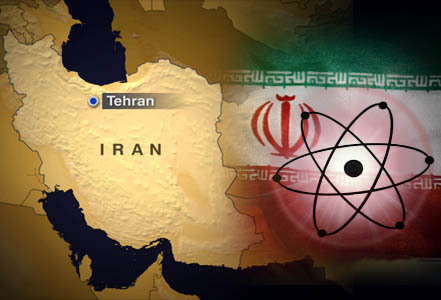
I’d like to add my two Rial to the din of commentary on the just-released IAEA report on Iranian nuclear activities.
There are a number of reasons why this report is notable, despite the fact that it uses much information that has been obtained previously and that most of the reported weapons development work took place between about 1998 and 2003.
First, the increasingly strident tone of the IAEA in pointing the finger at Iran for illicit weapons activities is a sea-change from the tone of reports on Iran under the previous Director General, Mohammed Elbaradei. Clearly, current IAEA DG Yukiya Amano isn’t drinking the Kool Aid this time around. The report cites a voluminous stack of evidence, much of it based on intelligence reports from Member States and other keen detective work, to conclude that, in fact, Iran is very, very likely pursuing a nuclear weapons program. Section G, Possible Military Dimensions, paragraph 43 is most specific. The Agency notes that Iran has carried out activity, including “the acquisition of nuclear weapons development information and documentation from a clandestine nuclear supply network”, and cites evidence in the report’s Annex, section c.4. The Agency says that some of the activities Iran has engaged in have civilian applications. Others, however, have specific military applications. Another snippet: Iran has conducted “work on the development of an indigenous design of a nuclear weapon including the testing of components.” Again, it points to specific evidence referenced in the Annex.
And here’s the showstopper, included in section K, the conclusions: “The information [that the IAEA has gathered] indicates that Iran has carried out activities relevant to the development of a nuclear explosive device.” This, folks, is a big deal.
Second, the report is unprecedented in its comprehensiveness. Sure, the DG, present and past, has reported on Iranian attempts to bob and weave around the IAEA’s requests for information and cooperation. But, this report collected a rather significant volume of information, connects a whole lot of dots, historical and otherwise, and concludes that yes, Iran really is trying to make a nuclear weapon. Pretty good detective work.
But most interesting and even disturbing, is the indication by the Agency regarding the amount of foreign assistance Iran has received in achieving its nuclear ambitions. According to Mark Fitzpatrick at the International Institute for Strategic Studies (IISS):
“Among the most interesting aspects of the IAEA report is the amount of foreign help it received in weaponisation. A former Soviet nuclear weapons expert spent six years in Iran lecturing on topics such as high explosives initiation and diagnostics. Most alarming, Iran received bomb designs from the AQ Khan black market network. The agency interviewed a member of the network (not Khan himself, who Pakistan has placed off-limits to inquisitive foreigners) who gave the investigators reason for concern that Iran received a weapon design more advanced than that which Khan sold to Libya ten years ago. The more advanced design would be a better fit for Iran’s missiles. Iran also sought foreign assistance on training in computer modelling using Monte Carlo methodology in nuclear chain reactions. Although press reporting had identified North Korea as the source of such training, the IAEA report in this regard refers only to “an institute in a nuclear-weapon State’, which can mean only China or Russia (which, along with France, the UK and US are the only NPT-recognized nuclear-weapon states). UN sanctions today prohibit any such assistance, and should be more tightly enforced.” Ya think?
The Wired National Security blogger Spencer Ackerman also cites this element of the report, pointing to the problem of “loose geeks”:
“One of the most disturbing pieces of evidence in the United Nations report about Iran’s program to develop a nuclear “device” isn’t even about an Iranian. It’s about a Russian physicist who has evidently assisted Iran with weapons design. And there may be tens of thousands more just like him, nonproliferation analysts say, ripe for hiring by rogue states or terrorist groups.
Congratulations, Vyacheslav Danilenko: You’re infamous. Danilenko, a former Soviet weapons scientist, was reportedly found by the International Atomic Energy Agency to have tutored the Iranians ‘on building high-precision detonators of the kind used to trigger a nuclear chain reaction.’
Danilenko isn’t named in the IAEA report. But the report refers obliquely to ‘a foreign expert’ who worked ‘in the nuclear weapon programme of the country of his origin.’ That expert, whom the IAEA interviewed, helped Iran from 1996 to 2002 research a kind of ‘high explosives initiation system’ used in nuclear devices.”
Brain drain in the former Soviet Union and from other nuclear weapons programs isn’t new. As the economies of these countries in transition deteriorated, former weapons scientists had to make a buck and, unfortunately, they attempted to do so by selling their nuke weapons know-how to the highest bidder. The USG has been funding activities under the Nunn-Lugar program for a number of years in order to employ these scientists in peaceful endeavors. But, the efforts, while important, haven’t been 100% successful. Hence Mr. Danilenko.
And, despite the stellar work by the Agency, I worry. I worry that the Chinese and Russian governments will continue to hem and haw and drag their feet in condemning Iran’s actions, which the IAEA has now put into high relief. This will continue to stymie any meaningful action against Iran.
P.S. Check out the Institute for Science and International Security analysis on the IAEA’s Iran report.